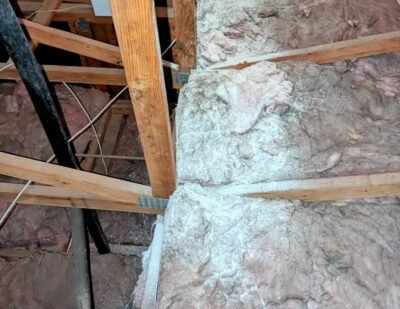The Importance of Masking Termite Droppings
 A termite inspector looks for four main signs of infestation: termite damage, subterranean termite mud tubes, termite wings, and termite droppings (frass).
A termite inspector looks for four main signs of infestation: termite damage, subterranean termite mud tubes, termite wings, and termite droppings (frass).
Termite droppings are made of wood and do not decompose over time. Some inspectors claim droppings darken with age, but unless they saw them when they were first expelled, how would they know if they changed color? This uncertainty makes it difficult to determine whether droppings indicate an active or past infestation.
If an inspector finds termite droppings, they assume an active infestation, because that’s what they are trained to identify. However, those droppings could be old, left over from a previous infestation that was already treated. This is why termite companies have an obligation to clean up or mask the droppings present at the time of treatment.
For example, if a company fumigates a home where droppings were found in the attic, they should return after the tent is removed to either vacuum them or, if the droppings are in inaccessible areas or embedded in insulation, apply a masking agent such as dry cement.
Why Masking Matters
During future inspections, masked areas serve as a reference point. If new droppings appear on top of the masking agent, this suggests continued termite activity and a potential treatment failure. If the initial treatment was a local spot treatment, the area would need to be retreated. If the entire home was fumigated and new droppings appear, it raises the possibility that the fumigation was ineffective—potentially requiring re-fumigation.
Without masking, there is no reliable way to determine whether a treatment was successful. In the absence of a clear failure indicator, like a termite swarm, the only evidence an inspector has to go on is the presence of droppings—whether old or new.
The Risk of Unmasked Droppings
If a company completes a treatment but fails to mask or remove droppings, it creates future problems. If a homeowner later allows their termite warranty to lapse and another company inspects the home, that new inspector will find the old droppings and may recommend an unnecessary new treatment.
Homeowners often believe they will remember where termite activity was previously found, but after a few years, those details fade. Without masking, they have no way to determine whether the droppings they see today were already there years ago or are new signs of activity.
Choosing the Right Termite Company
If you hire a termite company to treat your home, make sure they return after a fumigation to clean up droppings or apply a masking agent. Without masking, any follow-up inspections you paid for will be less effective, and you could end up paying for a treatment you don’t actually need.
At California Termite, we always mask or clean up the termite droppings that led to your treatment. If you choose another company, ask them about their masking strategy before signing any agreement. If they don’t have a clear answer, hire someone else.
